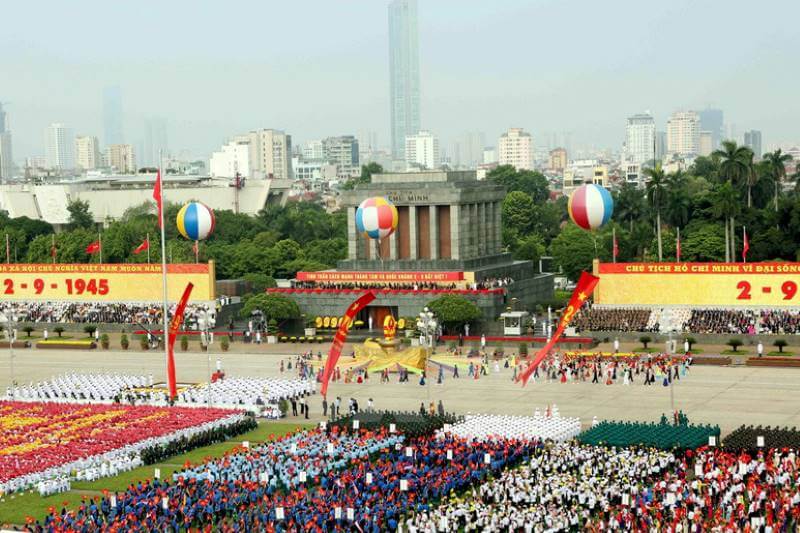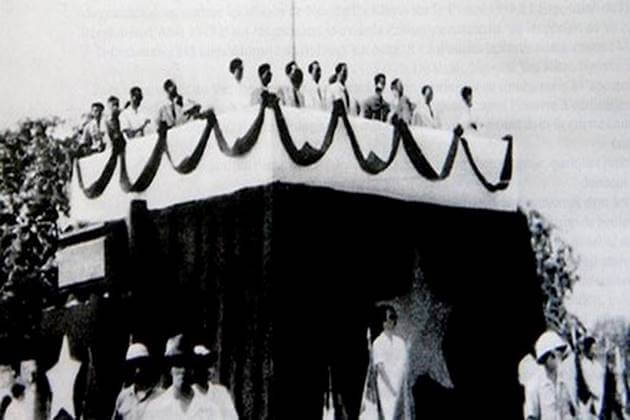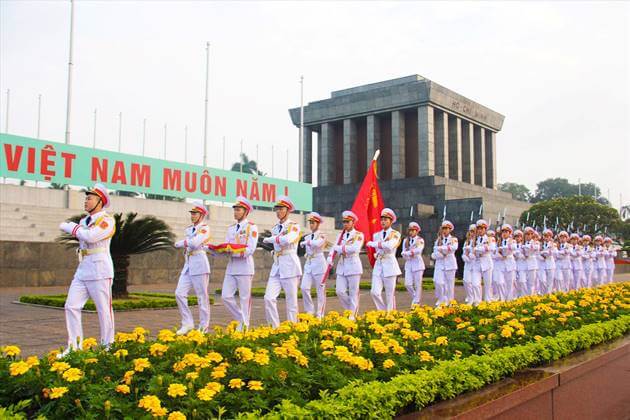No products in the cart.
As Capital Hanoi regarded as the heart of Viet Nam, Ba Dinh Square with 320 meters long and 100 meters wide could be considered the heart of Hanoi. Through many ups and downs of Vietnamese history, the square is now the solemn place to organize state ceremonies as well as the symbol of the S-shaped country.
History of Ba Dinh Square
The Square owes its name to Ba Dinh Uprising, an anti-French rebellion that happened in Vietnam during 1886–1887 as part of the Can Vuong movement. It is the place President Ho Chi Minh read the Proclamation of Independence of the Democratic Republic of Vietnam on September 2, 1945. And then it is also where the granite Mausoleum of Ho Chi Minh is built in 1973.
The Ba Dinh Square Complex
Mausoleum, museum and former residence of President Ho Chi Minh are here in the square. Besides, it is the starting point of some boulevards stretching outwardly and has Hung Vuong Road (1200 meters long and 40 meters wide) pave through. Getting into the square to the west, the first sight comes to your eyes is the quotation of President Ho Chi Minh, engraved in the huge stone wall in front of his mausoleum “Không có gì quý hơn độc lập tự do” (Nothing is more precious than independence and freedom). Located in its southwest is the former residence of Ho Chi Minh in Hanoi, and the museum which is opposite the famous one pillar Temple.
Ba Dinh Square nowadays is the place for many important occasions such as parades and commemoration of veterans. On the contrary to its solemnity during the day, in the night time, Ba Dinh Square is among few large, green and accessible areas for locals to go for a walk, do an exercise, etc.



